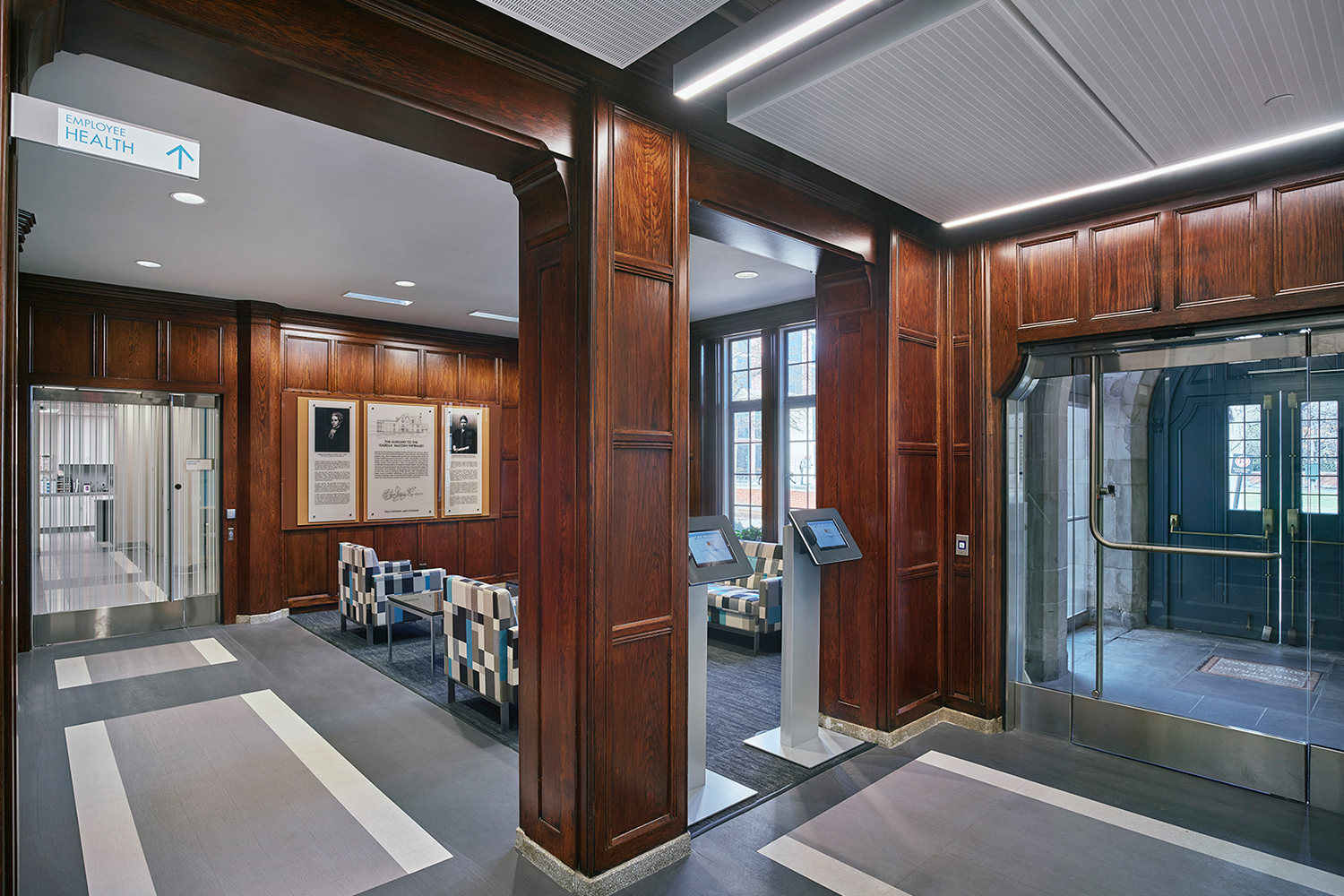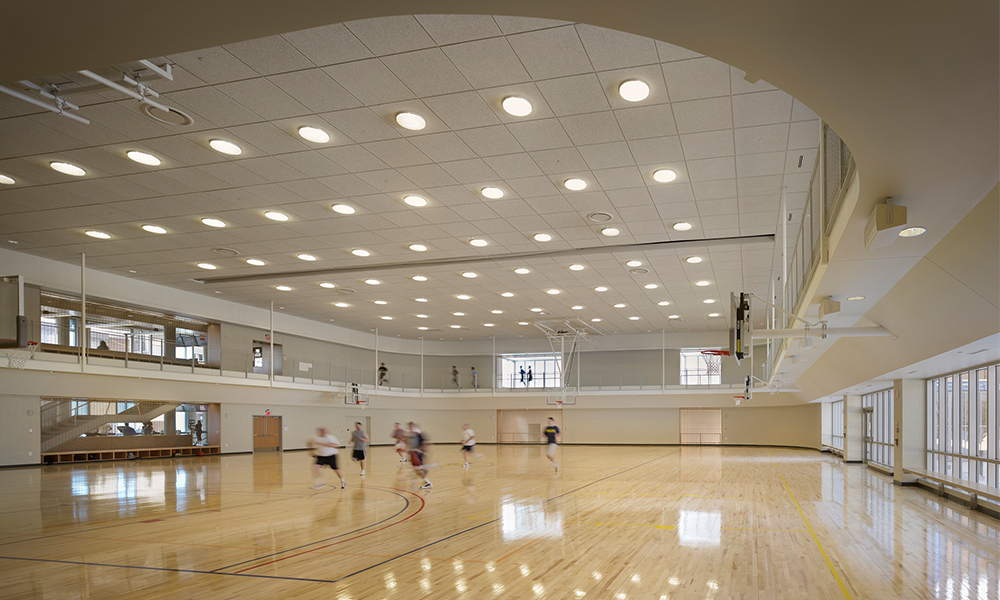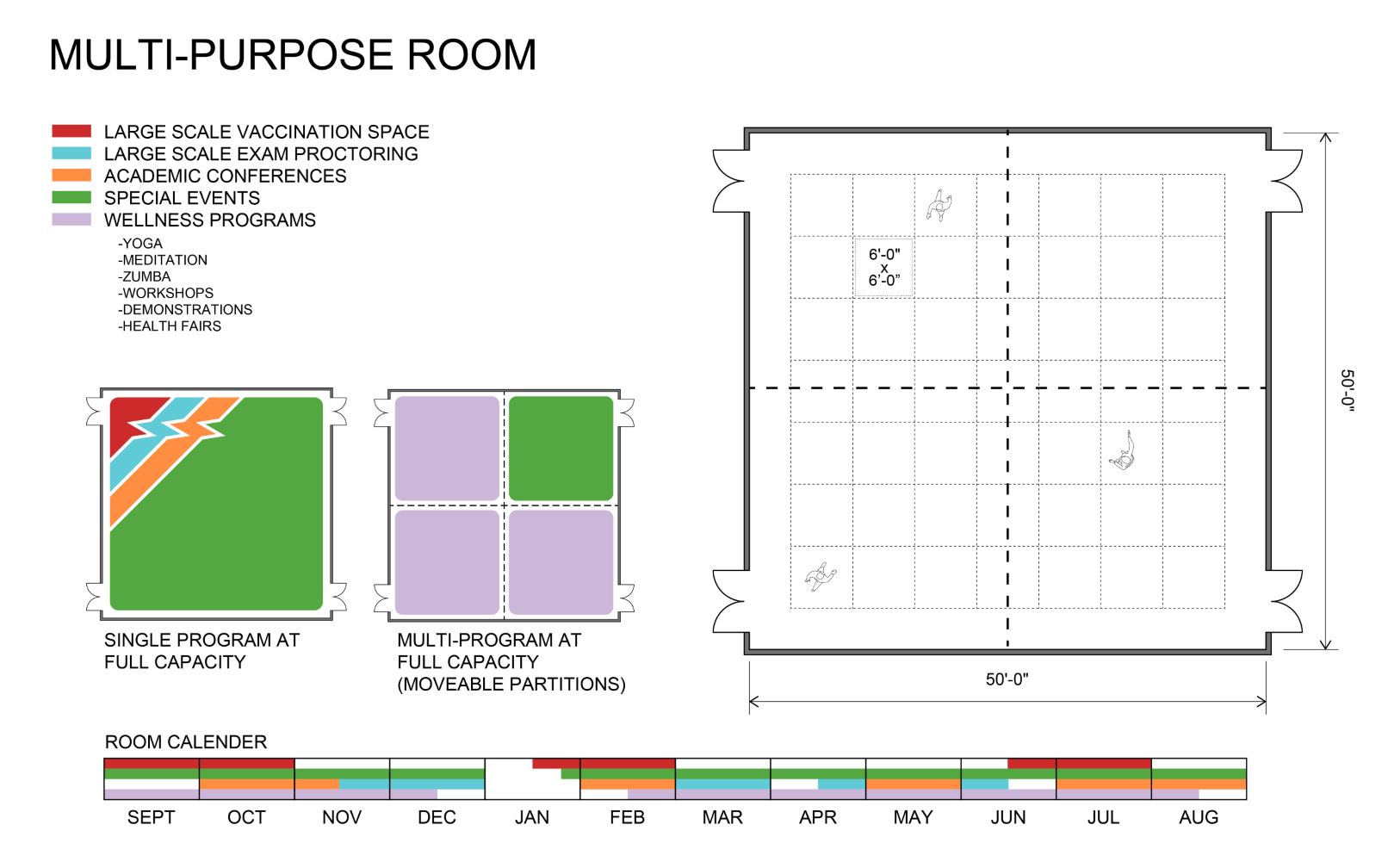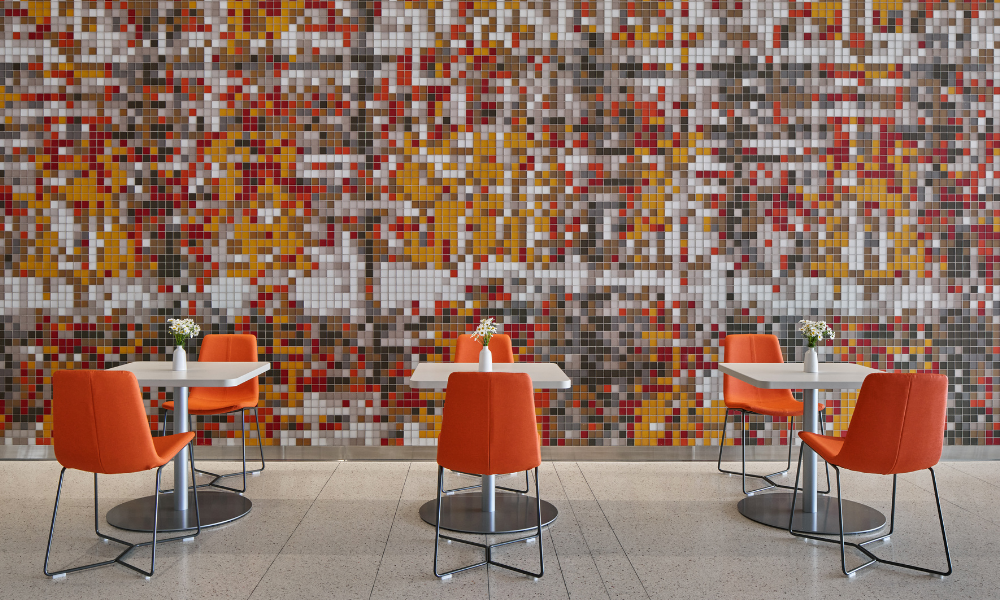
The Ever Relevance of the Student ‘Health and Wellness Center’ on College and University Campuses
With the right design, campus student health and wellness centers can serve as a powerful tool for student health success during and after the pandemic.
The biggest question facing college and university administrators this summer is whether, or how, to reopen campuses for the fall semester. As university officials, faculty, and staff seek to maintain as much of the college experience as possible, they must do so while juggling the safety and wellbeing of everyone on campus. The risk of a second wave, or another spike in COVID-19 cases, is still a possibility, and preventing or preparing for future case spikes remains a challenge. Hard architectural thinking and planning can aid them plan for this reality. As planning and design professionals, we have a role in aiding administrations in creating a safe campus environment. This can be accomplished without ground-up new construction or unsightly modular facilities in front of brick and mortar campus buildings.
The Role of Health and Wellness Centers
One building is now entering the fore as a particularly useful combatant on many campuses. The student health and wellness center has evolved in recent years, emphasizing the ‘wellness’ side of the design. These centers don’t only provide medical services, but typically psychological and counseling services co-located within the same building as well. Additionally, many contain space allowing for a robust wellness program – offering a plethora of stress-busting exercises as a perk for students. Amid a global pandemic, and while designing for a post-pandemic era, health and wellness offerings must be carefully planned allowing them to flourish. There are several program additives designers and universities could consider.
Isolation Rooms
Within the medical services side of the operation, few campus health centers are adequately equipped to handle cases of coronavirus, much less so a spike in cases. In a traditional healthcare setting, cases would be quickly isolated, most likely in an airborne infection isolation room (AIIR) or a negative pressure room. Many schools don’t possess isolation rooms designed according to the FGI guidelines – i.e., those designed with negative pressure and a contiguous, dedicated private toilet room and those that do have proper isolation rooms, now mourn the lack of more of them. Universities could consider converting existing exam rooms into isolation rooms or adding a dedicated floor for isolation in the future. Adding isolation rooms to existing or new residence halls is another option. The residence hall can incorporate isolation rooms either by adding one or two per dormitory floor or by dedicating a full dormitory floor planned with every bedroom as isolation rooms, including provisions for a separate kitchenette. That said, outside every isolation room, provisions for the storage of personal protective equipment (PPE), should be provided for the clinicians caring for these quarantined patients.
Healthy Minds
Most universities report that as soon as they built their new health centers and combined their programs with counseling services, to destigmatize the experience of receiving psychological help, their offices immediately fell short due to the surge in demand. College officials report that the dictum of, ‘if you build it, they will come’ does not adequately describe the reality they face now – which is more like ‘if you build it, and we’ll need more space. They will flood and overwhelm your available space – and you will not be capable of providing for everyone.’ Most, in other words, report inadequate space for counseling appointments. Building counseling services in health centers is not the only option. Residence halls, for example, can play a part in sharing the load. Some universities have already installed individual counseling offices within buildings of different functions throughout campus. Spreading these services throughout campus destigmatizes mental health services and makes them more accessible and routine.
From Wellness to Wellbeing
The wellness component of a university health agenda is an increasing trend on campuses that is growing in popularity and should not be underestimated in times like these. Some are even shifting the model of “wellness” to “wellbeing” – a holistic approach to health and student success. This approach often refers “to a wide variety of components, including spirituality, physical health, mental health, social relationships, and intellectual development.” Their offerings can include yoga classes, Zumba classes, aroma-therapy, massage therapy, demonstration cooking classes, and even adult coloring book sessions. Several universities are lucky enough to provide outdoor spaces from Zen gardens to mazes. By locating the wellness programs within the health centers, colleges and universities can further destigmatize seeking out help by making the building yet another ‘hang-out’ space on campus to come to and participate in these fun activities or just another place for a student to do her homework. Throw in a smoothie bar at the entrance, and voila! - a college kid’s dreams are made!

Purposeful Multipurpose
A common theme amongst health centers is their need for more ‘multipurpose spaces’ – designed with moveable partitions and flexible furniture. These spaces serve as the launchpad for many health and wellness programs but are often eliminated due to budgetary restraints. Creative resources and layout can make these multipurpose rooms live up to their full potential and go well beyond the usual health fair or staff meeting space. With careful planning and scheduling, multipurpose rooms could be utilized all year by the health center itself, with occasional downtime being ‘lent’ out to other university departments. The diagram below illustrates how this can be possible.

As shown, a space like this could prove its worth by being utilized at the start of each semester as large-scale immunization spaces and at the middle and end of each semester for large-scale, final exam proctoring. Some universities provide various special needs students with special testing accommodations - even as part of the health services themselves – that require set distances between seats, either to mitigate the chance of cheating or to allow for wheelchair or other special physical passage. This configuration of spaced-apart desks anticipates the current need for lecture spaces allowing for social distancing. These spaces provide the extra area to get it done. Additionally, academic conferences and health fairs can also occupy these rooms, contiguous with the health center provisions as a living lab of that college’s medical approach.
Aside from these calendar-specific events, year-round functions can be hosted by multipurpose rooms in their full or subdivided configuration by the wellness programs. Imagine a yoga class in one quadrant, a meditation space in another, a crafting session in another, and a small-scale health fair in the fourth quadrant. The more programs provided, the more the health center generates a buzz and marks itself as a destination space on campus that all students and maybe even faculty seek out with enthusiasm.
As universities deal with the ongoing development of the COVID-19 pandemic and maybe future ones, spatial readiness is key – and obtainable. The student health and wellness center is a critical space typology to help universities conceive of what was once inconceivable.





